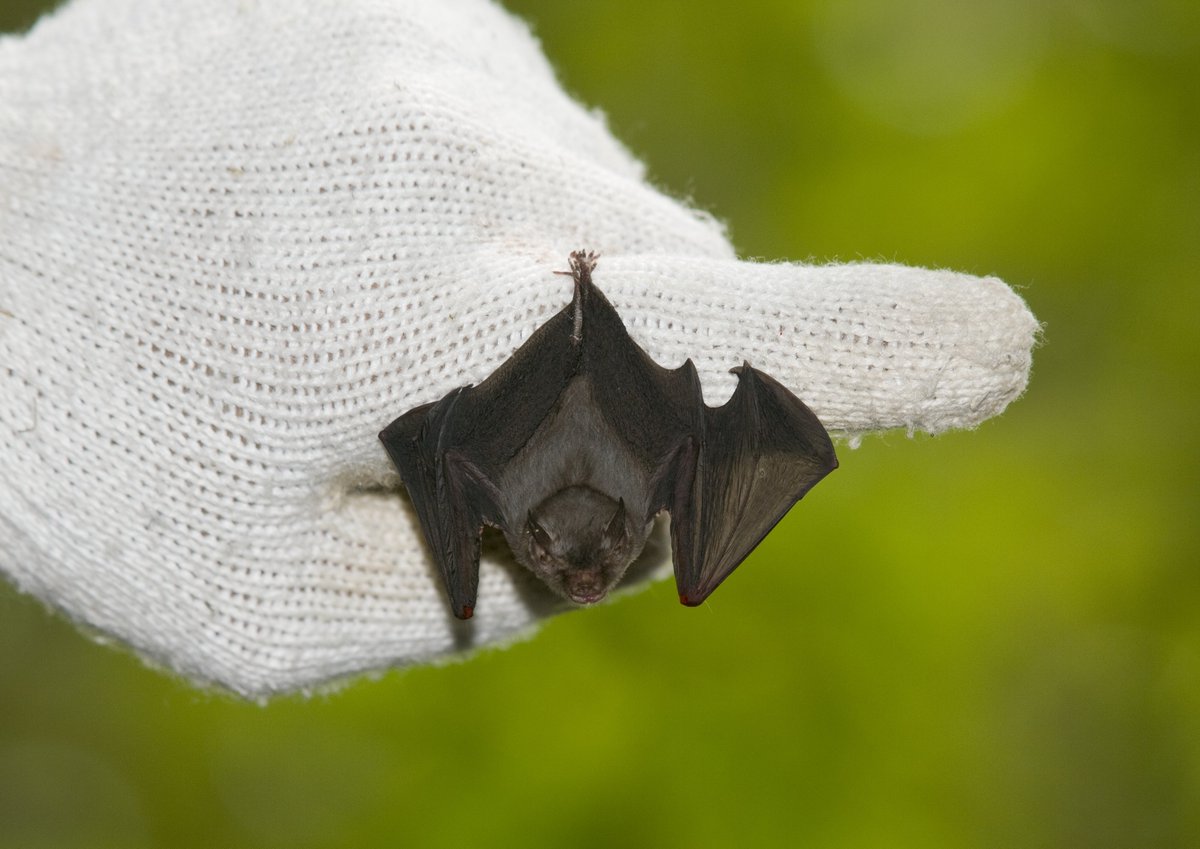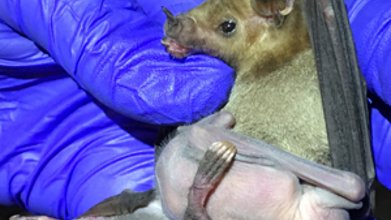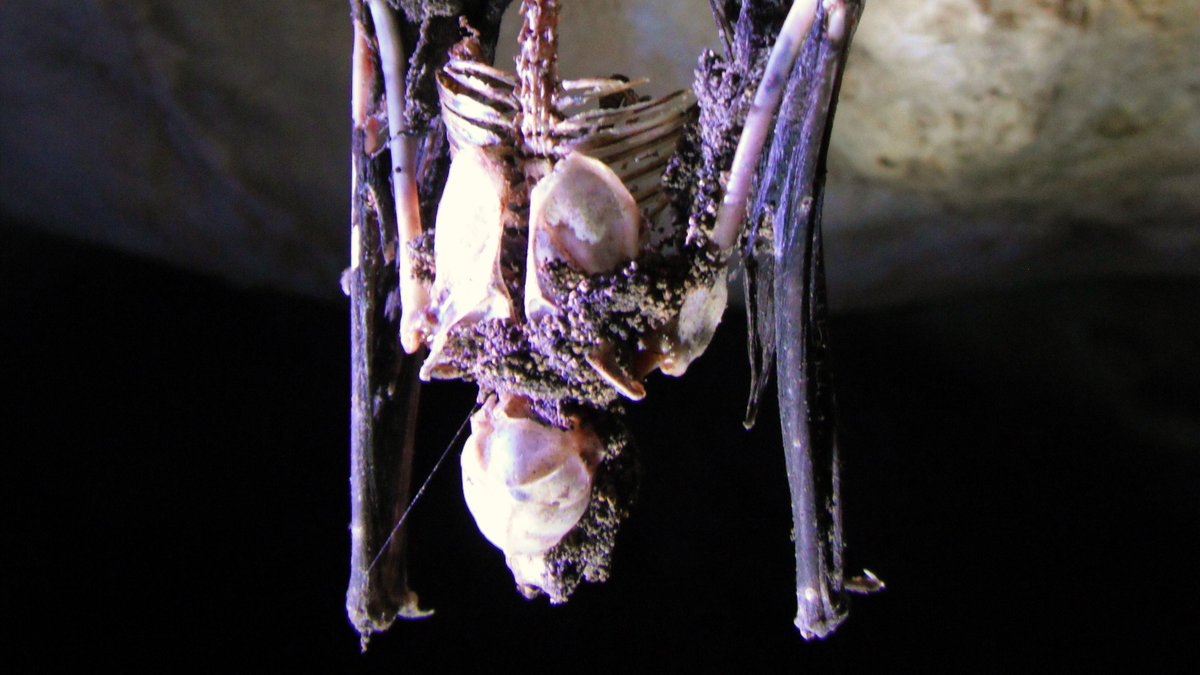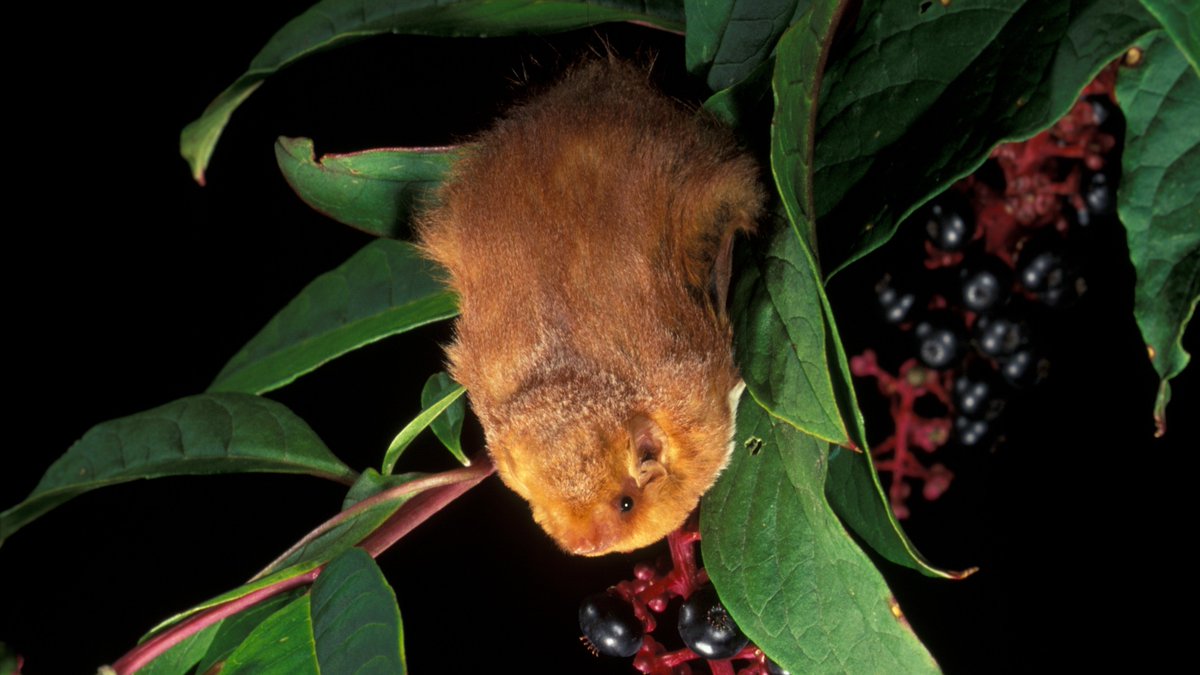
[Tweet by @BatsForLife]
I'd like to end the today with some super cool #BatFacts! Get ready for your mind to be BLOWN!
[A thread]
#Bats #BatTwitter
I'd like to end the today with some super cool #BatFacts! Get ready for your mind to be BLOWN!
[A thread]
#Bats #BatTwitter
[Tweet by @BatsForLife]
Cool Bat Fact #1: The Smallest Bat
Let's start with the smallest & biggest bats in the world
The smallest #bat is a Kitti's hog-nosed bat (aka Bumblebee bat) from Thailand, the size of your thumb tip & weighing less than a penny!
📸: Yushi & Keiko Osawa
Cool Bat Fact #1: The Smallest Bat
Let's start with the smallest & biggest bats in the world
The smallest #bat is a Kitti's hog-nosed bat (aka Bumblebee bat) from Thailand, the size of your thumb tip & weighing less than a penny!
📸: Yushi & Keiko Osawa

[Tweet by @BatsForLife]
Cool Bat Fact #2: The Biggest Bat
The largest bat is a Golden-crowned flying fox from the Philippines. It has a wingspan of up to 6 feet, but weighs only about 2 pounds. Also, it only eats fruit! 🍑🍍🥭🍌
batcon.org/article/golden…
#Bats #BatFacts
Cool Bat Fact #2: The Biggest Bat
The largest bat is a Golden-crowned flying fox from the Philippines. It has a wingspan of up to 6 feet, but weighs only about 2 pounds. Also, it only eats fruit! 🍑🍍🥭🍌
batcon.org/article/golden…
#Bats #BatFacts
[Tweet by @BatsForLife]
Cool Bat Fact #3: Eternal Life (almost...)
#Bats live incredibly long lives for animals their size. A Brandt’s myotis from Siberia was recorded living AT LEAST 41 years in the wild. Little brown bats in the US can live 34+ years!
batcon.org/article/the-ol…
Cool Bat Fact #3: Eternal Life (almost...)
#Bats live incredibly long lives for animals their size. A Brandt’s myotis from Siberia was recorded living AT LEAST 41 years in the wild. Little brown bats in the US can live 34+ years!
batcon.org/article/the-ol…
[Tweet by @BatsForLife]
Cool Bat Fact #4: Sociality
Many #bats are very social, living in large groups. Here, you can see Southern bent-wing bats from Australia huddled together, up to 100 bats per square foot! They're quite clean & spend lots of time grooming.
#BatFacts
Cool Bat Fact #4: Sociality
Many #bats are very social, living in large groups. Here, you can see Southern bent-wing bats from Australia huddled together, up to 100 bats per square foot! They're quite clean & spend lots of time grooming.
#BatFacts
[Tweet by @BatsForLife]
Cool Bat Fact #5: Largest Colony
Speaking of lots of bats, the US (Texas) is home to the largest colony of bats in the world. #BrackenCave, owned by @BatConIntl, houses 20 MILLION Mexican free-tailed bats every summer!
Cool Bat Fact #5: Largest Colony
Speaking of lots of bats, the US (Texas) is home to the largest colony of bats in the world. #BrackenCave, owned by @BatConIntl, houses 20 MILLION Mexican free-tailed bats every summer!
[Tweet by @BatsForLife]
Cool Bat Fact #6
There are SO many bats that emerge nightly during the summer from #BrackenCave that they’re visible on weather radar! Imagine being a weather person and seeing this on Doppler radar!
@BatConIntl #BatFacts #Bats
Cool Bat Fact #6
There are SO many bats that emerge nightly during the summer from #BrackenCave that they’re visible on weather radar! Imagine being a weather person and seeing this on Doppler radar!
@BatConIntl #BatFacts #Bats
[Tweet by @BatsForLife]
Cool Bat Fact #7: Super Speed
The #bats living in #BrackenCave are the fastest horizontal animal flier in the world, clocking in at 100 mph! That's faster than we drive on the highway! 😮
washingtonpost.com/news/morning-m…
@washingtonpost
#BatFacts
Cool Bat Fact #7: Super Speed
The #bats living in #BrackenCave are the fastest horizontal animal flier in the world, clocking in at 100 mph! That's faster than we drive on the highway! 😮
washingtonpost.com/news/morning-m…
@washingtonpost
#BatFacts
[Tweet by @BatsForLife]
Cool Bat Fact #8: Crazy Long Tongue
Imagine having a tongue 9 feet long! 😱
Some nectar #bats have tongues 1 1/2 times their body length to reach into flowers. They store it in their chest when not in use.
newscientist.com/article/dn1072…
@newscientist #BatFacts
Cool Bat Fact #8: Crazy Long Tongue
Imagine having a tongue 9 feet long! 😱
Some nectar #bats have tongues 1 1/2 times their body length to reach into flowers. They store it in their chest when not in use.
newscientist.com/article/dn1072…
@newscientist #BatFacts

[Tweet by @BatsForLife]
Cool Bat Fact #9: Super Moms
#Bat moms are SUPERMOMS! A pup can be 1/3 her body weight when born. That would be like a human giving birth to a toddler! 😱 She can even fly with her baby until it’s half her weight. Wowzers!
📸: @FrickWinifred/@BatConIntl
Cool Bat Fact #9: Super Moms
#Bat moms are SUPERMOMS! A pup can be 1/3 her body weight when born. That would be like a human giving birth to a toddler! 😱 She can even fly with her baby until it’s half her weight. Wowzers!
📸: @FrickWinifred/@BatConIntl

[Tweet by @BatsForLife]
Cool Bat Fact #10
How on earth can #bats hang upside down?? There's a special tendon in their feet that locks in place; they have to use energy to let go. You can find dead bats still hanging, like this one I found!
animals.howstuffworks.com/mammals/questi…
@HowStuffWorks
Cool Bat Fact #10
How on earth can #bats hang upside down?? There's a special tendon in their feet that locks in place; they have to use energy to let go. You can find dead bats still hanging, like this one I found!
animals.howstuffworks.com/mammals/questi…
@HowStuffWorks

@threadreaderapp unroll
[Tweet by @BatsForLife]
That’s it for today’s thread on Cool Bat Facts! (There are SO many more but we’d be here forever, haha)
Here’s the full unrolled thread:
threadreaderapp.com/thread/1344417…
#Bats #BatConservation #BatFacts
That’s it for today’s thread on Cool Bat Facts! (There are SO many more but we’d be here forever, haha)
Here’s the full unrolled thread:
threadreaderapp.com/thread/1344417…
#Bats #BatConservation #BatFacts
[Tweet from @BatsForLife] Here's the full mom/baby photo (it got cropped weird in the original tweet) 

• • •
Missing some Tweet in this thread? You can try to
force a refresh










